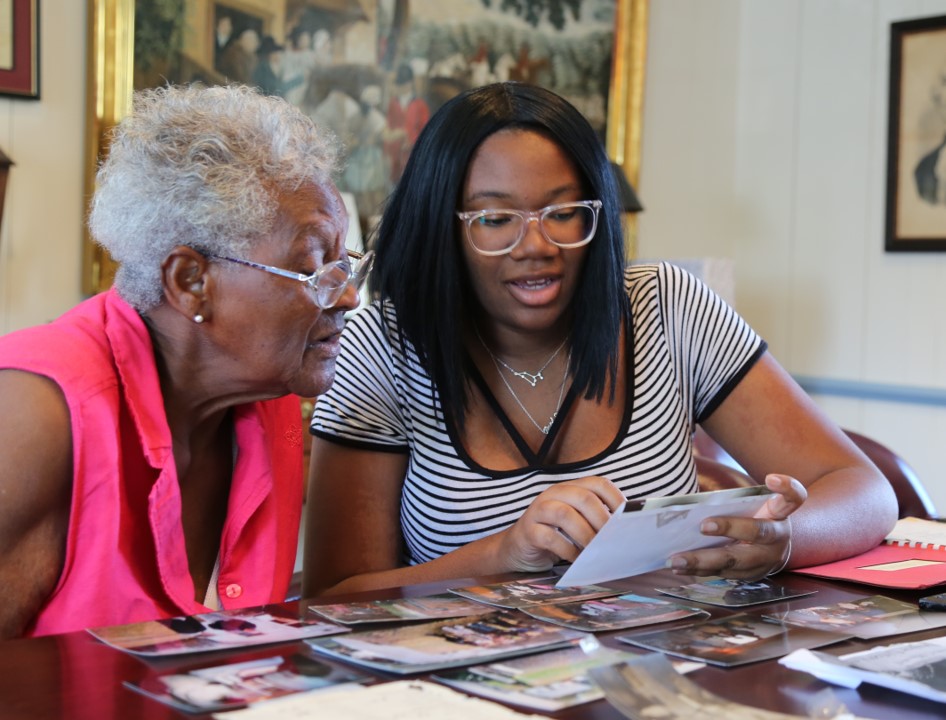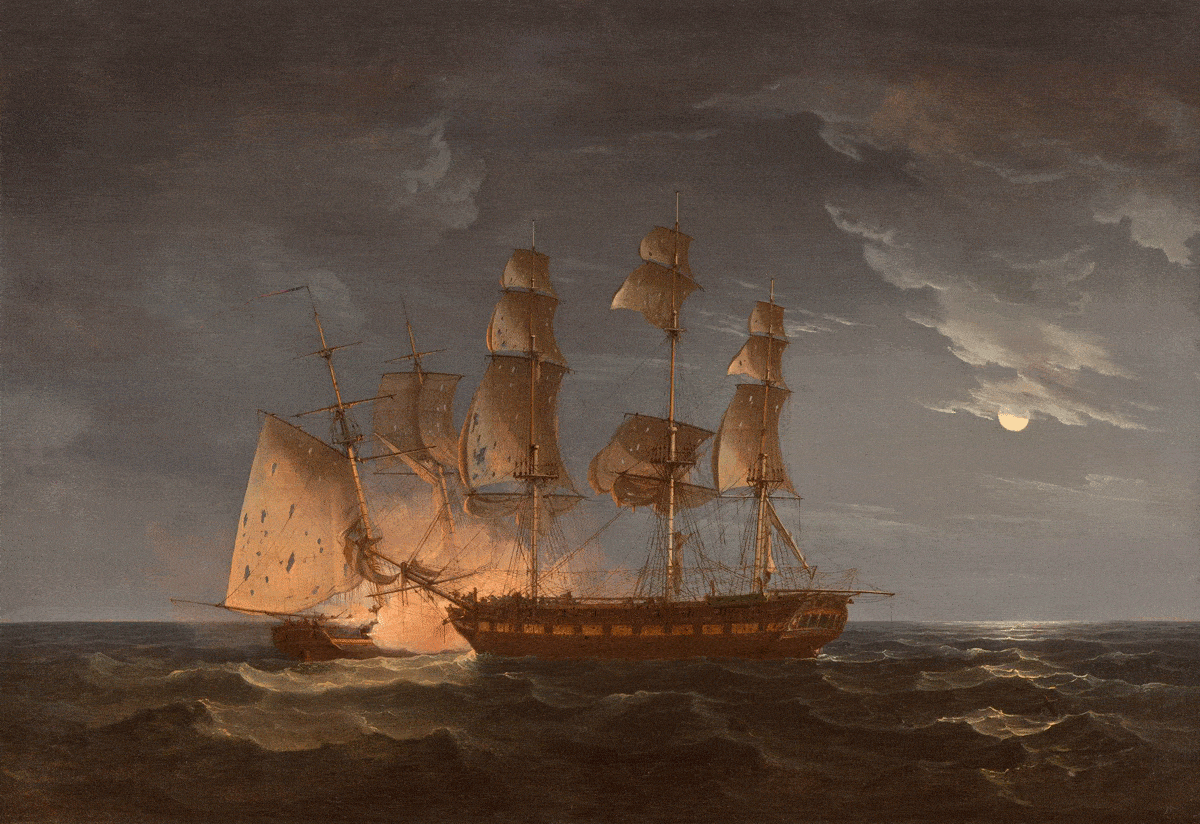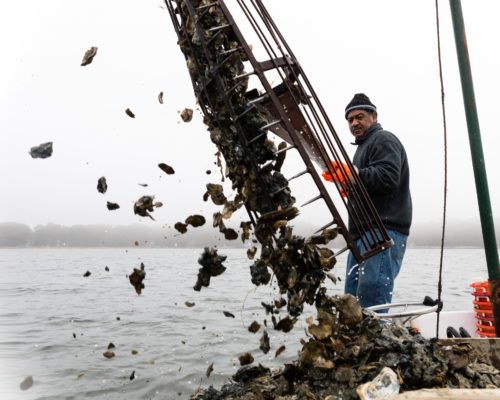Chesapeake Heartland project puts Kent County Black history on the map
Kim Briscoe Moody carries a map in her memory. “I was born and grew up on Prospect Street, in Chestertown. My mom grew up, was born on Calvert Street, and my father was also born on Prospect Street. I grew up in the Bethel AME Church [on the block in between], and I can remember playing on the back lot. It brings me joy, when I go home, to see these places.”
These streets, in the heart of what was once Chestertown, Md.’s predominantly Black neighborhood, have changed since Moody was a little girl. Thriving nightclubs, grocery stores, barber shops—all Black owned—have vanished since her childhood in the 1960s. All over Kent County, small rural Black communities have followed the same trend, dwindling in population as generations of young Black Kent Countians have moved away, seeking opportunities elsewhere
Moody was one of those talented African American Kent County ex-pats. A valedictorian and MVP star athlete of her graduating class in 1978, Moody moved away for a career and family. Over the years, she’s returned to Kent County, and has observed the slow disappearance of the Black community’s cornerstones. So when Airlee Ringgold Johnson, a community historian and old friend working with the Chesapeake Heartland project, reached out to collect her snapshots and stories, Kim saw an opportunity to preserve several generations of her family’s Kent County’s history.
The cultural map in Moody’s memory is as developed as the rural landscape of Kent County is not. The stories, traditions, language, and kinship of the Black community are vibrant, passed down through generations that have called this place home. This cultural landscape is largely uncharted and in some cases threatened by time—something the new Chesapeake Heartland initiative is working to change. Through the combined efforts of the local Black community, local and national partners, and the Starr Center at Washington College, oral histories, family photos, local lore, and historic documents are being shared and carefully preserved for future generations—mapping a rich and deeply rooted heritage along the way.
The inspiration for the Chesapeake Heartland project started in 2017, when then-director of the Smithsonian’s National Museum of African American History and Culture, Lonnie Bunch, made a trip across the Chesapeake Bay to Chestertown. Bunch was in town to receive an honorary degree from Washington College, and stopped by the historic Grand Army of the Republic Post #25, Sumner Hall, which was hosting a Smithsonian-sponsored Museum on Main Street exhibit, “The Way We Worked.” The exhibit focused on work in the Black community, and during his visit, Bunch met with the organizations—including the Starr Center—who had partnered with Sumner Hall on “The Way We Worked” for a roundtable discussion.
There, Bunch identified something the local Black community already knew: that the depth and breadth of Kent County’s African American history and culture was unique. “The Way We Worked” marked just the beginning of what was possible when the community was asked to share their knowledge. For Bunch, the true heart of the National Museum of African American History and Culture wasn’t in Washington D.C. It was in places like Kent County, where the stories of Black triumph and artistry, celebration and accomplishment were just starting to be documented.
Later, over eggs and coffee at a local diner, Bunch spoke with some of the Starr Center staff about how to keep the momentum going through a partnership with the Smithsonian. The best approach, he suggested, was the one already modeled through “The Way We Worked” exhibit. Rather than an organization or museum identifying stories and objects to collect and then going out to ask for them, the Starr Center should rely on the Black community’s expertise. As community curators, they should define what they thought was important to share and preserve, and work with the Center closely to tell the stories of their own history and heritage.
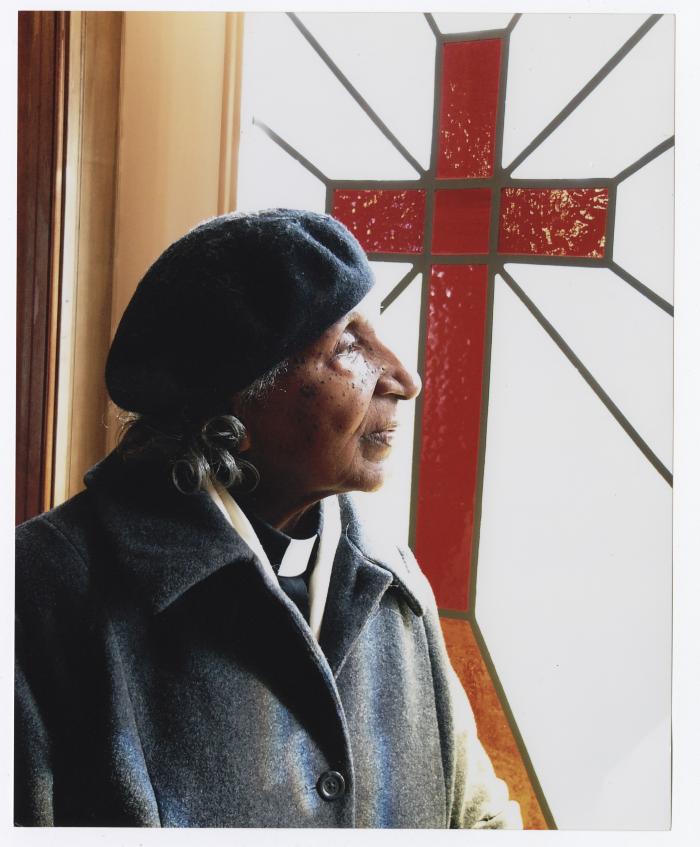
It is this approach—community curation—that is the core of the Chesapeake Heartland project. Envisioned as a grassroots initiative to find, digitize, share, and interpret four centuries of Kent County Black history, the Chesapeake Heartland team of local, regional, and national collaborators aimed not only to illuminate the region’s rich culture, but to define the Chesapeake Bay watershed as a national heartland of African American history and culture.
For this to work, it was clear the power needed to be in the hands of the community from the start. “From the beginning, there was a very diverse group of stakeholders from within the community who came together to talk about this initiative and brainstorm,” said Adam Goodheart, Hodson Trust-Griswold Director of the Starr Center for the Study of the American Experience at Washington College. From those conversations, it was clear that there were already members of the Kent County African American community who were collecting and sharing histories—and doing it in creative and important ways. Identifying these people and getting them involved was going to be critical to the project. “We had this network that already existed of people who knew local history, who had grown up in the heart of it, and who were gifted and dedicated chroniclers and sharers of that history,” Goodheart said.
Airlee Ringgold Johnson was one of the community historians who signed on to the Chesapeake Heartland project’s launch in 2020. Along with her friend and colleague Carolyn Brooks, she helped the Starr Center and its partners reach out to the Black community to ask for their guidance and suggestions, and gather their oral histories, documents, and photos for a large public archive. Ringgold Johnson is a natural connector who seems to know everyone in Kent County, and if she doesn’t, she can reach out to someone who might.
Like Kim Briscoe Moody, Ringgold Johnson is a native of Kent County who moved away after graduation for college and a career, but she returned to Chestertown to retire. A passionate lover of local history herself who has long volunteered for Kent County historical societies and organizations, Ringgold Johnson is proud of her work with the Chesapeake Heartland project. It’s an initiative that’s important to her, on a community level and on a personal level, too. “I got involved with the project from the very beginning. I’ve always been very interested in history and I believe totally in our community. I just wanted to be part of it,” Ringgold Johnson said. She liked that the project was giving back to the community in a collaborative spirit.
In her role as community historian, Ringgold Johnson has worked with Kent County citizens as whole, identifying who knows what; where treasure troves of photos, ephemera, and stories might be found; and slowly collecting, digitizing, and archiving the history shared with them. And what Ringgold Johnson and the Starr Center team have collected so far is astonishing and vast: photos and stories of the second African American ever admitted to the Coast Guard, William Pickrum; yearbooks from Garnett, Chestertown’s all-Black high school; oral histories from local Black clergy, community leaders, athletes, and entrepreneurs; wedding invitations; oil paintings of local scenes; family trees and home movies; and footage from Juneteenth celebrations and BLM protests. Ringgold Johnson, ever the staunch historian, has also submitted her own contributions to Kent County’s Black history, including photos of debutante balls and treasured snapshots of summer trips to Chesapeake African American resort beaches with her extended family.
For Ringgold Johnson, being able to provide a wider background for individual histories or photos is deeply rewarding. “When I talk with people, oftentimes I can put things together or correlate things, putting them into context with what happened in earlier times or previous centuries. We’re able to connect the dots from the time that African Americans first came to Kent County up until now, and the whole story is just fascinating.”
In particular, Ringgold Johnson appreciates the celebratory nature of the Chesapeake Heartlands project, and the chance to elevate the stories of Kent County’s flourishing Black community. “We have a rich history. Chesapeake Heartland shows that despite all odds, we endured. We have a vibrant culture and we’ve been able to surpass our minority, oppressive situation, and it hasn’t kept us from mentally flourishing in our own community.”
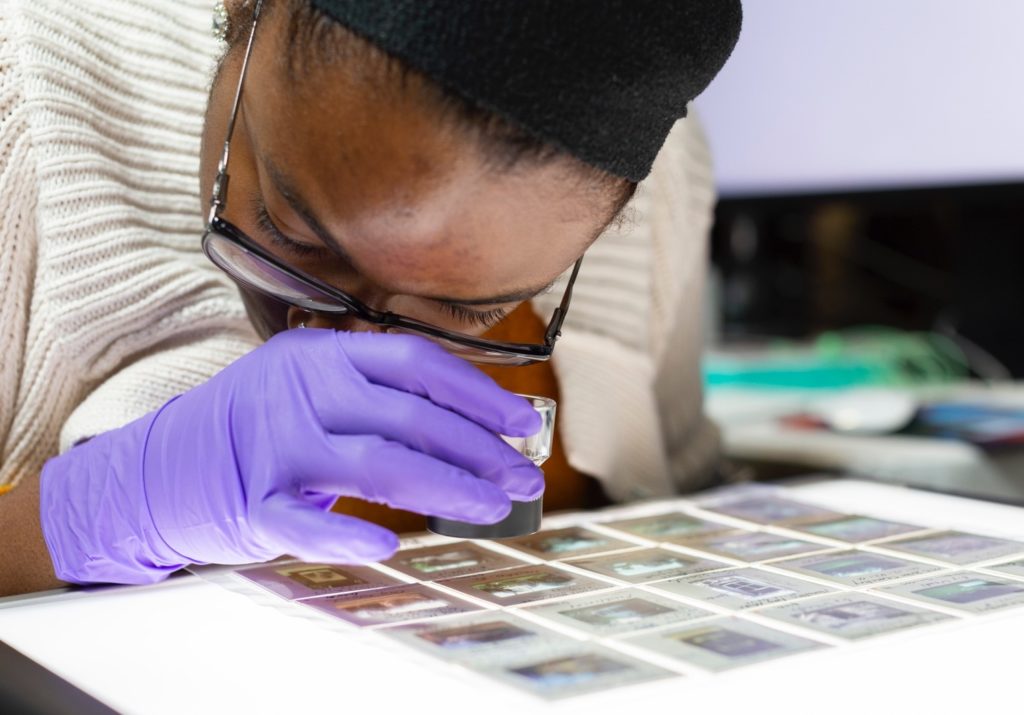
The Chesapeake Heartland project is further supported by a veritable army of Washington College students, interns, faculty, and local, regional, and national partners as it reaches into the community and researches what they share. A big, blue Heartland truck—staffed by students and interns, and equipped with digital recording equipment, teaching materials, scanners, televisions, whiteboards, and other gear—acts as a roving collections center, exhibit, and studio. Branded with the project’s “sankofa” logo (an African symbol of a mythical bird flying forward with its head turned backward), the big, blue truck makes its way to churches and town halls, festivals and concerts to connect with Black community members on their home turf.
Jada Aristilde was in the first wave of students working with the Chesapeake Heartland project, and has since continued on as staff with the initiative after graduation. A self-professed “people person’’ with a passion for diversity and inclusion, Aristilde was approached in the second semester of her freshman year by Starr Center staff. She wasn’t a history major but had always loved the stories of the past. The idea of really rolling up her sleeves and working closely with community members was appealing. In 2018, Aristilde started working as a student intern specifically with community outreach, ensuring Black participation and engagement from day one. Aristilde found herself combing through church basements and attics, collecting photos and oral histories for the archive. Later, she’d deepen her knowledge with an internship at the Smithsonian’s National Museum of African American History and Culture, working as a student bridge between the Chesapeake Heartland project and the museum. Today, Aristilde is a frequent fixture on the Heartland truck, chatting with locals and listening to their stories.
For Aristilde, someone passionate about Black history who cares deeply about the individuals she’s met through this initiative, her experience with community curation has been revelatory. It’s thoughtfully inclusive, and for Aristilde, that’s really the only way to approach this kind of project.
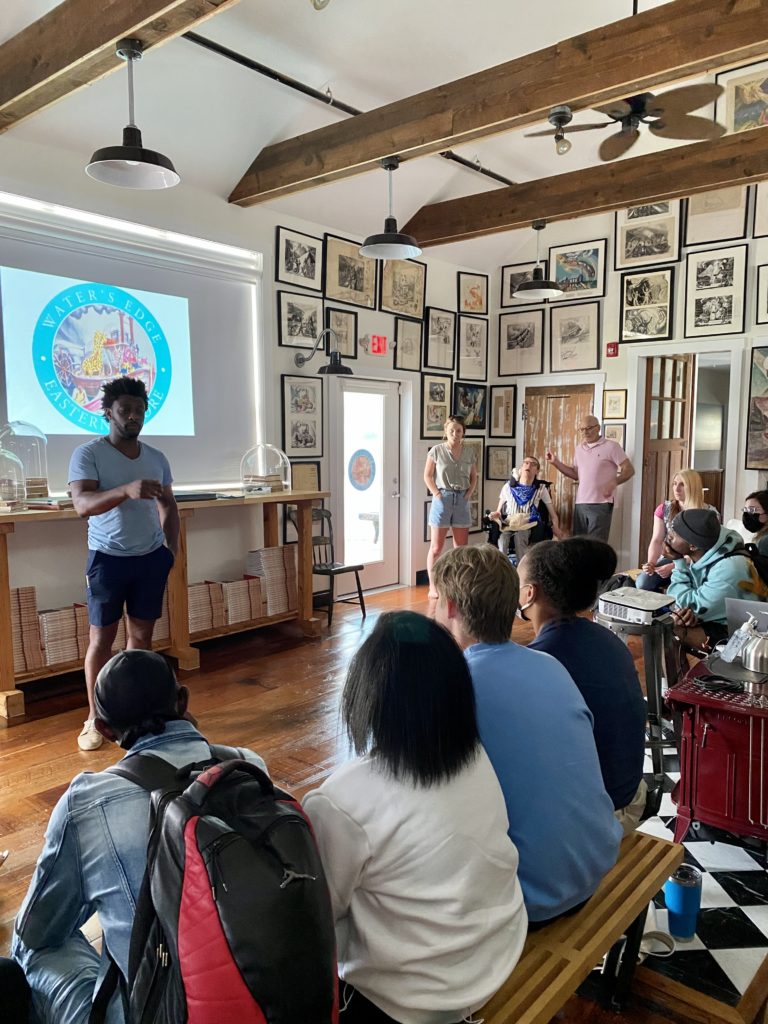
“Black people in Kent County who learn about the project are always thrilled because they lead the way in digitizing and preserving their specific family history. They’re able to take a lead in preserving their own story. It’s asking them, what do you want us to do with this? How do you see the Chesapeake Heartland project helping you? Participants choose what items they submit to the archive, and then they also get a hard copy to keep for themselves so their personal history
is maintained.”
Many of the documents and histories that are submitted through the blue Chesapeake Heartland African American Humanities truck or to the archive are pieces of a puzzle. Their stories and context need further research, and this is where Washington College students, faculty, and partners like the Maryland State Archives and Sumner Hall come in. In particular, a body of rare 18th- and 19th-century documents known as the Commodore Collection was identified at an auction by members of the local community. They told the story of enslaved and free Black people from Kent County, from runaway slave advertisements to estate purchases. Particularly remarkable was a bill of sale documenting the purchase of an enslaved man’s freedom by a prominent member of the free Black community, himself formerly enslaved. Through efforts of the Starr Center, Sumner Hall, and the Maryland State Archive, the items were acquired, digitized, and researched. Along the way, living descendants of the free Black man, Congo Mango (later Mander), were identified and contacted. Some of them still lived in Kent County.
According to Goodheart and other staff at the Starr Center, the Chesapeake Heartland project is only just getting started. There have already been spin-offs—a Heartland hip-hop themed summer camp for high schoolers, a traveling exhibit sharing the story of former Coast Guard Commander William Pickrum. But Goodheart and the National Museum of African American History and Culture are thinking bigger. They plan to use the Chesapeake Heartland project as a model, giving Black communities across the Eastern Shore and Maryland the tools to identify the stories and achievements they want to share.
For community members like Kim Briscoe Moody, having a way to preserve that kind of generational knowledge is essential to who we are today. It provides a sense of place and connection as the Black community moves towards their future, and it’s especially important for the next generation, who can find pride and inspiration in their own rich roots. “The Heartland project really gets people to look at their pictures and tell their story. I hope that there’s an awareness that we need to continue to pour into our future by providing our history,” Moody said. “If it’s not told, if it’s not seen, we’ll never know. The preservation of African American history in Kent County is so important, so we never forget where we came from.”
To learn more about the Chesapeake Heartlands project, to explore their online archives, or to share your own Kent County Black history, visit chesapeakeheartland.org.

